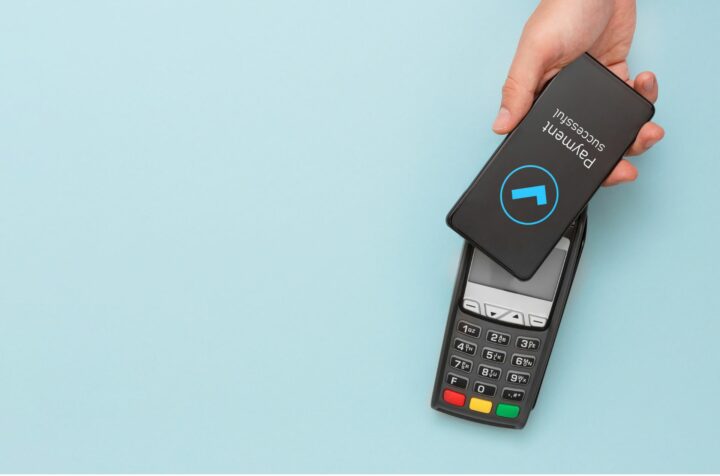Imagine leaving millions of potential customers locked out of your business, simply because your website, app, or digital solution isn’t accessible. Scary, right? Now, instead of a nightmare, picture this: reaching a wider audience, boosting brand loyalty, and even avoiding costly lawsuits – all by making your digital products inclusive.
Accessibility isn’t just about breaking down barriers and creating inclusive experiences for everyone, it’s a smart business move. With 1.3 billion people experiencing some form of disability, companies have a tremendous opportunity to tap into an often-overlooked market segment. By ensuring digital products are accessible to everyone, your business can broaden its reach while creating experiences that resonate with all users.
Let’s look at the opportunities that lie within accessible design, from legal compliance to expanding your customer base, discover how a few tweaks can make life easier and more accessible for many people, and open doors to a whole new world of success.
Boost your reach: the power of accessible solutions
Accessibility and user-centric development are ongoing journeys, not destinations. By continuously seeking diverse user input and embracing an inclusive design philosophy, you can create products and services that work for everyone.
Let’s look at three areas you should consider when developing accessible digital solutions:
1. Understanding the accessibility gap
Accessibility challenges vary widely and include issues related to visual, auditory, motor, and cognitive impairments. It’s important to recognize that users with disabilities may encounter barriers such as inaccessible web sites, incompatible screen readers, or inadequate alternative text for images.
Challenges may include:
- Visual: Color blindness affects millions, and users with low vision struggle with small text, and screen reader compatibility issues.
- Physical: Difficulty using touch screens for users with motor impairments, lack of keyboard navigation alternatives, and inaccessible CAPTCHAs.
- Cognitive: Websites that overwhelm users with cognitive disabilities due to complex layouts, unclear language, and lack of alternative text for images.
An empathetic approach involves putting oneself in the shoes of users facing such challenges. Developers need to understand the frustrations and limitations that users may experience, and this understanding should drive a commitment to creating digital environments that are inclusive and accessible to all.
Such empathy in development can include:
- Shifting your perspective: Use tools such as screen readers and disability simulations to experience challenges firsthand.
- Engaging with the community: Partner with disability rights organizations and individuals with diverse needs for feedback.
- Be proactive: Design with accessibility in mind from the start, not as an afterthought, and test with people who have accessibility issues from day one.
2. The importance of inclusive design
Inclusive design goes beyond accommodating users with disabilities; it benefits everyone. For example, captions designed for users with hearing impairments can also benefit users in noisy environments. Well-structured and easy-to-navigate interfaces help users of all abilities.
In addition to improving the user experience, there are legal and ethical reasons to prioritize inclusive design. Many jurisdictions have regulations mandating accessibility standards, underscoring the importance of making digital spaces accessible to all (more on this below).
Consider some of these benefits:
- Voice control: Helpful for everyone, not just users with mobility impairments, while driving or multitasking.
- Closed captioning: Valuable for auditory learners and non-native speakers, and improves understanding for anyone in a noisy environment.
- Keyboard navigation: Enables efficient use for power users and those with visual or motor impairments.
3. User-Centric Development
User-centered design recognizes that successful digital solutions address the real needs and challenges of end users.
Achieving this requires continuous user input at every stage of development, from initial ideation to usability testing. Continuous feedback loops also ensure that the final product meets users’ expectations and needs. This approach not only improves accessibility, but also increases overall user satisfaction and engagement.
Two ways to shift your focus:
- Move from making assumptions to understanding actual user needs through research and testing.
- Use iterative development, with continuous user feedback, throughout the design process.
Accessibility Testing
Find out how you can foster greater digital inclusion by testing your product with real users with disabilities today.
Find out moreUnlocking business success: The strategic imperative of digital accessibility
Embracing accessibility in digital development not only contributes to better user engagement and loyalty but also facilitates market expansion, legal compliance, meeting global standards, and ensuring a positive brand image in an increasingly interconnected world.
Let’s take a closer look at each segment:
Enhanced user engagement and loyalty
Creating accessible digital products goes beyond addressing specific needs; it’s about enhancing the overall user experience.
- Beyond disability benefits: Accessible features like closed captions and clear navigation benefit everyone, leading to higher satisfaction and engagement. When users find a product that caters to their needs regardless of abilities, it fosters a positive experience.
- Reduced frustration: Eliminating barriers creates a smoother user experience, fostering loyalty and positive brand perception.
- Loyalty and advocacy: Satisfied users are more likely to become loyal customers and advocates for the brand. Word-of-mouth recommendations and positive reviews, especially regarding accessibility, can significantly impact a brand’s reputation.
Just consider a streaming service like Spotify. Their app comes with a large range of accessibility features, from screen reader compatibility, keyboard shortcuts, voice control, adjustable playback speed, and audio descriptions for podcasts.
Market expansion
Businesses that invest in accessibility gain a competitive edge, more reach, and greater revenue potential – and are better able to unlock the full potential of their product. All by addressing the needs of a diverse customer base.
Take Instagram’s alt text feature for images on its app, which serves as a ‘text tag’ to provide information of an image if it cannot be properly loaded or seen. This not only benefits visually impaired users but also helps reach those with slow internet connections who rely on text descriptions.
Legal compliance
In today’s digital landscape, legal compliance, adherence to accessibility standards, and understanding of global regulations are paramount Beyond creating a product that can be used by all (and all the obvious benefits that brings), there can be some serious legal issues if you don’t get it right.
Consider the (globally recognized) Web Content Accessibility Guidelines (WCAG), the EU’s Web Accessibility Directive, Germany’s Barrierefreiheitsstärkungsgesetz (BFSG), the US’s Section 508 of the Rehabilitation Act, and many more.
In a recent example, Domino’s Pizza was taken to court in 2016 for violating the Americans with Disability Act because its website and smartphone app were inaccessible to a blind user. Six years and undoubtedly a lot of legal fees later, they settled out of court.
All of them, to varying degrees, set legal standards for digital accessibility (such as the need to provide text alternatives, keyboard accessibility, and navigable structures), and all of them may apply to your product, depending on where it’s used.
Failure to comply can lead to legal consequences, fines, and reputational damage.
Developing a harmonized approach to development, understanding the global nature of digital accessibility regulations, and conducting regular accessibility testing are critical to ensuring not only ongoing compliance, but also that solutions remain accessible as technologies and user needs evolve.
The future is inclusive
There is no better time to start building a digital experience that benefits everyone, strengthens your brand, and expands your reach.
Discover the transformative power of accessibility testing and learn how it can unlock your digital solution’s potential in a more inclusive future.








